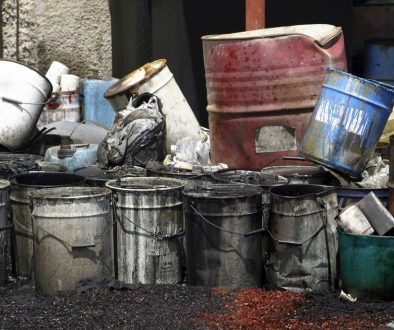Handling hazardous waste correctly is important for both our safety and for protecting the environment. We understand that dealing with hazardous materials can be complex and sometimes daunting. Hazardous waste can include anything from chemicals and paints to asbestos and batteries. Knowing how to manage these materials safely helps prevent accidents and contamination.
One of the first steps in safely managing hazardous waste is to correctly identify what materials are considered hazardous. Improper handling can cause serious health issues and environmental damage. Beyond identification, using the correct safety gear is crucial. Equipping yourself and your team with gloves, masks, and other protective equipment minimises risk while handling these materials.
Proper storage and labelling are also vital practices in managing hazardous waste. Keeping these materials in secure containers reduces the chance of spills and accidents. Clear labelling ensures that everyone handling the waste knows exactly what they are dealing with, making the disposal process smoother and safer. Additionally, understanding and adhering to legal requirements for the disposal of hazardous waste is essential. This ensures compliance with regulations and promotes safe environmental practices.
Being well-informed and prepared makes the process of handling hazardous waste much safer and more efficient. Let’s dive deeper into the steps that will help you manage hazardous waste on your site effectively.
Identifying Hazardous Waste on Your Site
Identifying hazardous waste is the first critical step in ensuring safe handling and disposal. Hazardous waste can come in various forms, including liquids, solids, gases, and sludges. Common examples are paints, solvents, pesticides, batteries, and materials containing asbestos. It’s crucial to inspect your site to identify all potential hazardous waste thoroughly. Look for labels and safety data sheets (SDS) on containers, which often indicate if a product is hazardous.
A practical approach is to categorise waste based on its properties. These categories can include flammable, corrosive, reactive, and toxic materials. Flammable items can catch fire easily, while corrosive substances can damage skin or other materials. Reactive materials might cause explosions or release harmful gases, and toxic wastes can be poisonous or cause long-term health issues. By understanding these categories, we can ensure that each type of waste is handled in the safest manner possible.
Essential Safety Gear for Handling Hazardous Waste
Handling hazardous waste requires the right safety gear to protect ourselves from potential harm. The basic safety gear we recommend includes gloves, masks, and protective clothing. Gloves keep harmful substances from coming into contact with the skin. Masks are essential for preventing inhalation of dangerous fumes or particles. Protective clothing, such as coveralls, shields our body from spills and splashes.
Additional safety equipment may be needed depending on the type of hazardous waste. For instance, if you are dealing with materials that emit dangerous vapours, using respirators instead of regular masks is advisable. Safety goggles protect your eyes from splashes, especially when handling liquids like acids or solvents. Boots or puncture-resistant shoes are also recommended to shield your feet from hazardous spills or sharp objects. Always ensure that your safety gear is in good condition and replace it if it becomes damaged. Proper use of this equipment greatly reduces the risk of accidents and exposure to harmful substances.
Identifying Hazardous Waste on Your Site
Knowing how to identify hazardous waste is essential for maintaining safety on your site. Hazardous waste includes items that can be harmful to health or the environment. Common examples are batteries, chemicals, fluorescent bulbs, asbestos, and certain types of paint. These items should never be mixed with regular rubbish as they require special handling and disposal.
When identifying hazardous waste, look for warning labels on containers indicating danger, toxicity, or flammability. Items without labels that seem suspicious should be treated with caution. It’s important to educate everyone on the site about these hazardous materials to ensure they can recognise and properly manage them. If unsure about an item, consult safety guidelines or a professional for advice.
Essential Safety Gear for Handling Hazardous Waste
Handling hazardous waste safely requires the right protective gear. Personal protective equipment (PPE) is crucial to protect yourself from potential harm. Basic PPE includes gloves, safety goggles, and masks. For more dangerous substances, consider using face shields, full-body suits, and respirators. Ensuring that PPE is in good condition and fits properly is vital for effective protection.
Always use heavy-duty gloves to prevent skin contact with hazardous substances. Safety goggles protect your eyes from splashes of harmful liquids, while masks or respirators are necessary for dealing with toxic fumes and dust. Wearing the correct PPE not only safeguards your health but also helps in responsibly managing hazardous waste on your site.
Conclusion
Properly managing hazardous waste on your site is crucial for ensuring safety and environmental responsibility. By correctly identifying hazardous materials and using the right safety gear, we can significantly reduce the risks associated with handling these dangerous items. Organising your rubbish and being aware of what can and cannot be disposed of in skips plays a vital role in maintaining a clean and secure site.
Remember, hazardous waste needs special attention and should never be mixed with regular rubbish. Taking these steps not only helps in compliance with legal requirements but also promotes a healthier working environment. At Enviro Skip Hire, we are committed to supporting you in all aspects of waste management. For expert advice and reliable skip hire services, visit our website at Enviro Skip Hire today. Let us help you keep your site safe and efficient.




